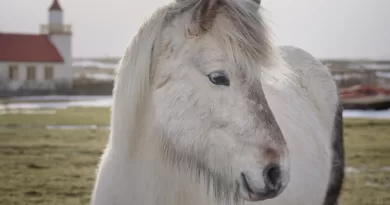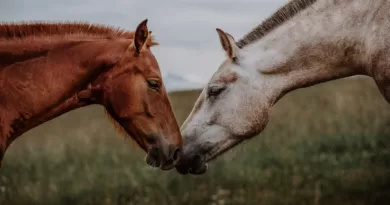How to Treat Protein Bumps on Horses
What are Protein Bumps on Horses?
Protein bumps, also known as protein granulomas, are an increasingly common condition found in horses. These bumps typically appear as firm, raised areas on the skin and can vary in size and shape. They are often found in areas where pressure or friction is applied, such as the girth or saddle area. While protein bumps are usually not painful or harmful to the horse, they can cause discomfort or irritation if left untreated.
Protein bumps are thought to occur when a horse’s skin is exposed to constant irritation or trauma. This irritation can lead to the accumulation of inflammatory cells, which then form a mass under the skin. While the exact cause of protein bumps is not fully understood, it is believed that certain factors such as a poor fitting saddle, chafing equipment, or inadequate grooming practices can increase the likelihood of their development. Additionally, horses that have sensitive skin or are prone to allergies may be more susceptible to developing protein bumps.
Identifying Protein Bumps: Symptoms and Characteristics
Protein bumps, also known as granulomas or sarcoids, can be visually identified by their distinct characteristics on a horse’s skin. These raised bumps may vary in size, ranging from small lesions to large tumor-like growths. Typically, they have an irregular shape and can appear as rounded nodules, flat patches, or even ulcerated areas. In addition to their physical appearance, protein bumps may also exhibit certain symptoms. These can include hair loss in the affected area, crusting or scabbing, and the presence of discharge or bleeding.
Although protein bumps can occur in various locations on a horse’s body, they are commonly found in areas where the skin is thin or subject to friction, such as the head, neck, groin, or under the tail. It is important to note that while most protein bumps are benign, some can be aggressive and spread rapidly. Therefore, early identification and prompt intervention are crucial to managing these skin abnormalities effectively. Veterinarians typically diagnose protein bumps based on their distinct appearance and by taking a tissue sample for laboratory analysis.
Causes of Protein Bumps in Horses: Exploring the Underlying Factors
Protein bumps, also known as granulomas, can be a perplexing issue for horse owners and veterinarians alike. While the exact cause of these bumps is not always clear, several underlying factors have been identified as potential culprits. One such factor is an allergic reaction to certain substances present in the horse’s environment. Dust, pollen, and even certain types of bedding can trigger an immune response in sensitive horses, leading to the formation of protein bumps.
In addition to allergies, bacterial infections can also play a role in the development of protein bumps. When a horse experiences a cut, scrape, or another type of skin injury, bacteria can enter the wound and cause an infection. If the infection goes untreated or is not properly managed, it can lead to the formation of pus-filled protein bumps. In some cases, the body’s immune response to the bacteria may result in the formation of granulomas as a natural defense mechanism.
Preventing Protein Bumps in Horses: Effective Management Strategies
Protein bumps, also known as granulomas, can be a troublesome issue for horse owners. Fortunately, there are effective management strategies that can help prevent these bumps from occurring. Firstly, maintaining proper hygiene is crucial. Regularly cleaning and grooming the horse’s skin can help prevent the buildup of dirt, sweat, and bacteria that can lead to the formation of protein bumps. This involves thoroughly washing and drying the horse’s coat, especially after workouts or periods of intense sweating. Additionally, keeping the horse’s living area clean and removing any potential sources of irritation can also contribute to preventing these bumps.
Another important management strategy is ensuring a balanced and nutritious diet for the horse. Providing the horse with high-quality feed that meets its nutritional needs can help support a strong immune system, which in turn can help prevent the development of protein bumps. It is recommended to consult with a veterinarian or equine nutritionist to determine the specific dietary requirements of the horse and make necessary adjustments if needed. Moreover, maintaining a consistent feeding schedule and avoiding sudden dietary changes can also contribute to the overall health of the horse and reduce the risk of protein bumps.
Natural Remedies for Protein Bumps on Horses: Holistic Approaches
One holistic approach to managing protein bumps on horses is through herbal remedies. Certain herbs, such as calendula and chamomile, are known for their anti-inflammatory properties and can help reduce swelling and discomfort. These herbs can be brewed into a tea and applied topically to the affected areas or added to the horse’s feed for internal benefits.
Another holistic option is the use of essential oils. Oils like lavender and tea tree have antimicrobial properties that can help prevent infections in protein bumps. Diluted essential oils can be applied directly to the bumps or mixed with carrier oils, such as coconut oil, for a soothing massage. It’s important to remember that essential oils should always be used with caution and in moderation, as some horses may have sensitivities or allergies. Consulting with a veterinarian or equine herbalist is recommended before incorporating essential oils into a horse’s treatment plan.
Medical Treatments for Protein Bumps: Veterinary Interventions
Veterinary interventions play a crucial role in the treatment of protein bumps on horses. One common approach is the use of corticosteroid injections, which can help reduce inflammation and alleviate discomfort. These injections are typically administered directly into the protein bump, providing targeted relief. In some cases, multiple injections may be required over a period of time to achieve optimal results. Additionally, veterinarians may also recommend the application of topical creams or ointments that contain anti-inflammatory ingredients to further reduce swelling and promote healing.
In more severe cases, surgical removal of the protein bump may be necessary. This procedure involves the excision of the bump under anesthesia, and it is typically performed when other treatment options have been ineffective. The specific surgical technique used will depend on the characteristics and location of the protein bump. Following the procedure, horses may require a period of rest and rehabilitation to ensure proper healing. Overall, veterinary interventions provide valuable options for the treatment of protein bumps and can effectively address the underlying issues that cause these bumps to develop in the first place.
Protein Bumps and Nutrition: Dietary Considerations for Prevention and Treatment
Proper nutrition plays a crucial role in the prevention and treatment of protein bumps in horses. It is essential to ensure that horses receive a well-balanced diet that meets their nutritional requirements. Including sufficient amounts of high-quality proteins, vitamins, and minerals in their feed can strengthen the immune system and promote healthy skin. Moreover, adding supplements rich in omega-3 fatty acids can help reduce inflammation and support overall skin health.
When designing a diet for horses prone to protein bumps, it is important to avoid excesses of certain nutrients that can exacerbate the condition. For instance, excessive sugar and starch intake can disrupt the horse’s gut flora, leading to imbalances and inflammatory responses. Therefore, it is advisable to limit the consumption of sugary treats and provide a forage-based diet to maintain optimal digestive health. A thorough understanding of a horse’s specific dietary needs, coupled with regular monitoring, can contribute to the prevention and management of protein bumps.
Protein Bumps and Hygiene: Proper Cleaning and Grooming Practices
Proper cleaning and grooming practices play a crucial role in the management of protein bumps on horses. Regular grooming sessions help maintain the horse’s skin health and prevent the accumulation of dirt and debris, which can aggravate the condition. When cleaning the affected areas, it is essential to use mild, non-irritating shampoos or cleansers specifically formulated for horses. Harsh chemicals or strong detergents may further irritate the skin and worsen the protein bumps. Care should be taken to gently cleanse the affected area without applying excessive pressure or causing any discomfort to the horse.
In addition to regular cleaning, proper grooming practices can also aid in the prevention and management of protein bumps. Regularly brushing the horse’s coat helps distribute natural oils and remove dead skin cells, reducing the likelihood of clogged hair follicles. By keeping the coat clean and free from tangles, grooming can help improve overall skin health and reduce the risk of protein bumps. It is important to choose grooming tools, such as brushes and combs, that are suitable for the horse’s specific coat type and to ensure that they are clean and properly maintained to avoid any potential contamination or irritation.
When to Seek Veterinary Assistance for Protein Bumps on Horses
If you notice protein bumps on your horse, it is important to monitor their condition closely. Generally, protein bumps are not a cause for immediate concern and can often resolve on their own with proper management. However, it is advisable to seek veterinary assistance in certain situations. Firstly, if the protein bumps are rapidly increasing in size or number, it is best to consult a veterinarian to rule out any underlying medical conditions. Additionally, if the bumps become painful or show signs of infection such as redness, swelling, or discharge, veterinary intervention is necessary. Prompt veterinary assistance is also recommended if the horse shows signs of discomfort, lameness, or any other abnormal behavior associated with the protein bumps.
Furthermore, seeking veterinary assistance is crucial if the protein bumps do not improve or show any signs of healing even after implementing appropriate management strategies. A veterinarian can conduct a thorough examination to determine the cause of the protein bumps and provide specific treatment options. Remember, while many protein bumps may not require immediate veterinary attention, it is always better to err on the side of caution and seek professional advice when in doubt. The expertise of a veterinarian can help ensure the health and well-being of your horse and prevent any potential complications that may arise from untreated protein bumps.
Protein Bumps: Long-Term Management and Future Outlook
Protein bumps on horses require careful long-term management to ensure the well-being of the animal. Once a horse develops protein bumps, it is important for owners to closely monitor the condition and take appropriate steps to prevent further growth or discomfort. This includes regular grooming and cleaning of the affected areas, as well as adhering to a suitable diet and exercise regimen. Additionally, owners should stay vigilant for any changes in the appearance or behavior of the horse, and seek veterinary assistance if necessary.
Looking towards the future, ongoing research and advancements in equine healthcare may provide new insights into the causes and treatment options for protein bumps on horses. As our understanding of these conditions improves, it is possible that more targeted and effective interventions will be developed. However, it is essential for horse owners and caretakers to stay informed and implement the best practices available to them in order to ensure the long-term management and well-being of horses affected by protein bumps.
What are protein bumps on horses?
Protein bumps, also known as granulomas, are small localized masses that form in the skin of horses. They are typically the result of an immune response to foreign proteins.
How can I identify protein bumps on my horse?
Protein bumps usually appear as firm, raised nodules on the skin. They can vary in size and may be accompanied by hair loss or inflammation in the surrounding area.
What causes protein bumps in horses?
Protein bumps can have various underlying factors, including insect bites, foreign bodies, allergic reactions, or infections. It is important to identify the specific cause in order to effectively manage and prevent them.
How can I prevent protein bumps in my horse?
Effective management strategies for preventing protein bumps include maintaining proper hygiene and grooming practices, providing a balanced diet, and minimizing exposure to potential allergens or irritants.
Are there any natural remedies for protein bumps on horses?
Some holistic approaches for treating protein bumps include the use of herbal remedies, essential oils, or topical ointments. However, it is important to consult with a veterinarian before trying any natural remedies.
What medical treatments are available for protein bumps on horses?
Veterinary interventions for protein bumps may involve the use of anti-inflammatory medications, antibiotics, or surgical removal of the bump if necessary. Treatment will depend on the specific cause and severity of the bump.
How does nutrition affect protein bumps in horses?
Proper nutrition is crucial for the prevention and treatment of protein bumps. A balanced diet that meets the horse’s nutritional needs can help support a healthy immune system and promote skin healing.
What hygiene practices should I follow to manage protein bumps on my horse?
Proper cleaning and grooming practices, such as regular bathing, keeping the horse’s living area clean, and avoiding dirty or wet environments, can help reduce the risk of protein bumps and promote overall skin health.
When should I seek veterinary assistance for protein bumps on my horse?
It is recommended to seek veterinary assistance if the protein bump is causing discomfort to the horse, if it is rapidly growing or changing in appearance, or if there are signs of infection, such as pus or excessive swelling.
How can I manage protein bumps in the long term?
Long-term management of protein bumps involves identifying and addressing the underlying cause, implementing preventive measures, and monitoring for any recurrence or new bumps. Regular veterinary check-ups are also important for ongoing management.
What is the future outlook for protein bumps in horses?
As research and understanding of protein bumps in horses continue to advance, new treatment options and preventive measures may become available. It is important to stay informed and consult with a veterinarian for the latest developments in managing protein bumps.




